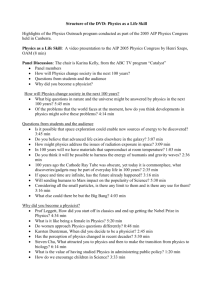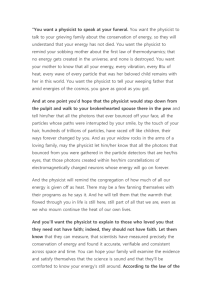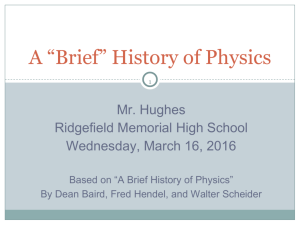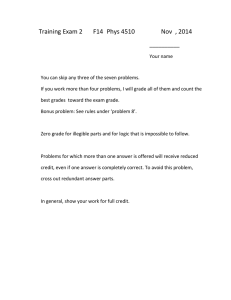PHYSICS SAE 2
advertisement
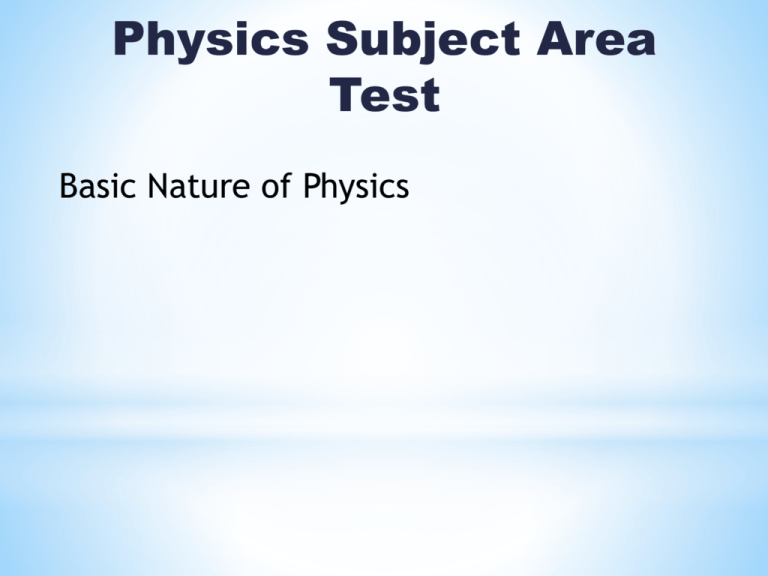
Physics Subject Area Test Basic Nature of Physics * A scientific theory summarizes a hypothesis or group of hypotheses that have been supported with repeated testing. * A law generalizes a body of observations. At the time it is made, no exceptions have been found to a law. Scientific laws explain things, but they do not describe them. * * There is no single procedure that scientists follow in their work. However, there are certain steps common to all good scientific investigations. * These steps are called the scientific method. * *Physics uses models that describe phenomena. *A model is a pattern, plan, representation, or description designed to show the structure or workings of an object, system, or concept. *A set of particles or interacting components considered to be a distinct physical entity for the purpose of study is called a system. * *Models help scientists develop hypotheses. *A hypothesis is an explanation that is based on prior scientific research or observations and that can be tested. *The process of simplifying and modeling a situation can help you determine the relevant variables and identify a hypothesis for testing. Galileo modeled the behavior of falling objects in order to develop a hypothesis about how objects fall. If heavier objects fell faster than slower ones, would two bricks of different masses tied together fall slower (b) or faster (c) than the heavy brick alone (a)? Because of this contradiction, Galileo hypothesized instead that all objects fall at the same rate, as in (d). * * A hypothesis must be tested in a controlled experiment. * A controlled experiment tests only one factor at a time by using a comparison of a control group with an experimental group. * * In SI, the standard measurement system for science, there are seven base units. * Each base unit describes a single dimension, such as length, mass, or time. * The units of length, mass, and time are the meter (m), kilogram (kg), and second (s), respectively. * Derived units are formed by combining the seven base units with multiplication or division. For example, speeds are typically expressed in units of meters per second (m/s). *SI Standards * In SI, units are combined with prefixes that symbolize certain powers of 10. The most common prefixes and their symbols are shown in the table. * A typical bacterium has a mass of about 2.0 fg. Express this measurement in terms of grams and kilograms. Given: mass = 2.0 fg Unknown: mass = ? g mass = ? kg *Sample Problem, continued Build conversion factors from the relationships given in the SI Prefixes Table. Two possibilities are: 1 𝑥 10−15 𝑔 1 𝑓𝑔 𝑎𝑛𝑑 1 𝑓𝑔 1 𝑥 10−15 𝑔 Only the first one will cancel the units of femtograms to give units of grams. (2.0 fg) 1 𝑥 10−15 𝑔 ( 1 𝑓𝑔 ) = 2.0 𝑥 10−15 𝑔 * * Accuracy is a description of how close a measurement is to the correct or accepted value of the quantity measured. * Precision is the degree of exactness of a measurement. * A numeric measure of confidence in a measurement or result is known as uncertainty. A lower uncertainty indicates greater confidence. * * It is important to record the precision of your measurements so that other people can understand and interpret your results. * A common convention used in science to indicate precision is known as significant figures. * Significant figures are those digits in a measurement that are known with certainty plus the first digit that is uncertain. Even though this ruler is marked in only centimeters and half-centimeters, if you estimate, you can use it to report measurements to a precision of a millimeter. *Rules for Determining Significant Zeros *Rules for Calculating with Significant Figures *Rules for Rounding in Calculations * Tables, graphs, and equations can make data easier to understand. For example, consider an experiment to test Galileo’s hypothesis that all objects fall at the same rate in the absence of air resistance. In this experiment, a table-tennis ball and a golf ball are dropped in a vacuum. The results are recorded as a set of numbers corresponding to the times of the fall and the distance each ball falls. A convenient way to organize the data is to form a table, as shown on the next slide. *Data from Dropped-Ball Experiment *Graph from DroppedBall Experiment * * Oscilloscope electrical equipment that allows signal voltages to be viewed as a twodimensional graph Voltmeter, ohmmeter, ammeter a common electrical meter (multimeter), capable of measuring voltage, resistance, and current Spectrometer an optical instrument used to measure the properties of light over a portion of the electromagnetic spectrum * * Archimedes * Greek mathematician, physicist, engineer, astronomer, and philosopher * Law of levers * Archimedes screw * Archimede’s Principle Michael Farady * English chemist and physicist * Contributed to the fields of electromagnetism and electrochemistry * The “farad” - unit of capacitance * Farady constant – the charge on a mole of electrons * about 96,485 coulombs Sir Isaac Newton * English physicist, mathematician, * astronomer, alchemist, and natural philosopher * Three Laws of Motion * 1. Inertia * 2. F=ma * 3. Action/Reaction * Universal Law of Gravitation Neils Bohr * Danish physicist * Understanding of atomic structure and quantum mechanics * Placed electrons in discrete orbits around the nucleus Determined chemical properties of elements are largely due to the number of electrons in the outer orbits Originated the idea that photons are emitted when electrons drop from a higher energy orbit to a lower one Received the Nobel Prize for Physics for his work on quantum mechanics Marie Curie * Polish-French physicist and chemist * Winner of 2 Nobel Prizes * 1st woman to win a Nobel Prize * Studied radioactive materials (pitchblende) * Isolated and identified Polonium * * and Radium Albert Einstein * German-born physicist * Best known for the theory of relativity * and the mass-energy equivalence Expanded Planck’s constant (E = hv) to include “quanta” Emax= hv-P Gravity is no longer a force, but a consequence of the curvature of space-time Robert Openheimer * American physicist * Best know for his role as the director of the Manhattan Project (effort to develop the first nuclear weapons) “The Father of the Atomic Bomb” * * * strong force binds quarks together, strongest force, holds neutrons and protons together, range theoretically infinite * mediated by gluons * weak force - responsible for different types of particle decays, including a process called beta decay * Much stronger than gravity, but with a much smaller range * mediated by bosons * Electromagnetism -binds negative electrons to the positive nuclei in atoms and underlies the interactions between atoms * * Gravity mediated by photons - the attraction that any mass on any other object with mass. * mediated by gravitons
